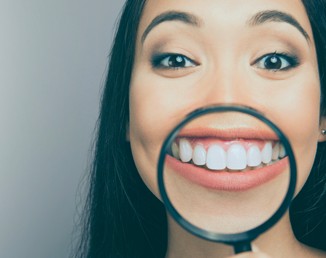
How to remove plaque at home
We all want to have a Hollywood smile, but not everyone finds it easy to keep their teeth pearly white. If you, like many people, struggle with dental plaque, you’ll be pleased to know that help is at hand.
In this blog post, we discuss how to get rid of plaque between your teeth and below the gum line. We also talk about how to remove hard, stubborn plaque, as well as providing preventative tips.
How to get rid of plaque between teeth
Plaque is a sticky, soft film that forms on your teeth. It can be colourless or pale yellow. It forms when bacteria, food particles and saliva come in contact with one another. Sugary or starchy food or drinks trigger the bacteria in plaque to produce acid, which can cause your teeth to break down and decay – so not only is plaque unsightly, but it also has a big impact on your dental health.[1]
Brushing your teeth twice a day with a fluoride toothpaste for two minutes at a time can help to get rid of soft plaque and prevent it from building up on the surfaces of your teeth. Many people find it easier to thoroughly brush with an electric toothbrush but you can use a manual as long as your technique is good. However, brushing alone isn’t enough to remove plaque that forms in between your teeth as it only cleans 60% of your teeth. That’s where interdental cleaning comes in.[2]
When using interdental products, you should always follow the directions for use as set out in the product packaging or in the instruction leaflet.
How to get rid of plaque below the gum line
When plaque forms below the gum line, it can lead to gingivitis. This refers to an inflammation of the gums. Symptoms include redness, swelling and pain. Gingivitis can be resolved by removing plaque, but how do you get rid of plaque in this hard to reach area?
While brushing and flossing around the gum line will help to keep it clean, to reach beneath the gum line, it’s best to also use an antiseptic mouthwash to control the build-up of plaque.
Generally speaking, you should rinse your mouth with mouthwash once per day for around 30 seconds at a time. However, you should consult your dentist for advice that is tailored to you.[3]
How to get rid of hard plaque
Removing soft plaque is relatively easy – all you need to do is maintain a good dental hygiene routine that includes regular brushing, flossing and the use of antiseptic mouthwash. However, if soft plaque is not removed, it leads to the build-up of tartar – a hard substance that is brown or yellow in colour and more difficult to get rid of. Tartar can result in a host of dental problems, such as cavities, gum disease, gum infection, gingivitis and bad breath.
Unlike plaque, tartar cannot be safely removed at home. That’s why it’s so important to get rid of plaque before it hardens by brushing and flossing well. It’s also important to keep your regular dental checkups and to have your teeth professionally cleaned by a hygienist when required. A professional clean, also known as a scale and polish, involves plaque and tartar being scraped from your teeth using specialist equipment and your teeth being polished to get rid of unsightly stains or marks.
To prevent the buildup of plaque, you should also avoid sugary or starchy foods, avoid smoking and replace your toothbrush (or toothbrush head if electric) regularly.
Keeping plaque and tartar at bay may seem like hard work but if you make dental hygiene a consistent part of your daily routine and schedule regular dental checkups, you should be able to ward off trouble and get the healthy smile you’ve always wanted.[1]
Resources:
[1] https://www.gosh.nhs.uk/conditions-and-treatments/general-medical-conditions/tooth-plaque/
[2] https://www.nhs.uk/live-well/healthy-teeth-and-gums/how-to-keep-your-teeth-clean/





